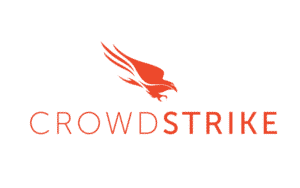For years, the idea of artificial intelligence (AI) surpassing human capabilities has been a popular theme in science fiction literature. While AI has proven to be an invaluable tool in many fields, there has always been one aspect that sets humans apart – the “emotional” and intuitive side, often referred to as the soul.
However, this distinction may soon become a thing of the past, especially for fund managers who take pride in their objective pursuit of profit and unbiased analysis of financial data. AI technology has the potential to replace human fund managers, combining lightning-fast data analysis with effective investment strategies.
Currently, there are only 11 AI-run exchange-traded funds in operation, according to a _’s screening. However, many other funds are likely utilizing AI behind the scenes as well. Lee Davidson, Morningstar’s chief analytics officer, suggests that asset managers should explore AI as a means to streamline their operations and increase efficiency.
The presence of index funds remains a significant threat for human managers. While current AI-run funds have struggled to outperform their benchmarks, one notable exception is the Qraft AI-Enhanced US Large Cap (QRFT) fund. As more AI-run funds emerge and “learn” from market conditions, it is expected that their performance will improve over time.
Quantitative investing, the analysis of stock data using computers, is not a new concept. However, AI takes it a step further by enabling computers to learn, adapt, and make decisions based on changing market dynamics, business trends, and economic conditions. This means that even the qualitative analysis performed by human money managers could eventually be replaced by AI systems.
In conclusion, the rise of AI in fund management is both exhilarating and concerning. While it presents new opportunities for cost reduction and enhanced efficiency, it also poses a threat to human managers and their unique insights. As AI continues to evolve and learn, the future of fund management may rest in the hands of soulless machines.
Artificial Intelligence Monitoring Earnings Conference Calls
CEO Ryan Pannell of Kaiju Worldwide, subadvising the AI-run ETF called BTD Capital (DIP), reveals that artificial intelligence (AI) is already being utilized to monitor earnings conference calls with analysts. This tech innovation allows AI to analyze not just the text, but also the tenor, pitch, and pace of the CEO’s voice in real time during the call. By examining these elements, the AI system can accurately predict the likely market reaction to the CEO’s comment and assess performance-influencing words.
Advanced AI-Run ETFs and Identifying Authentic Dips
While current AI-run ETFs are not as advanced, BTD Capital is employing a focused “buy on the dips” strategy for stocks. CEO Pannell acknowledges that the primary challenge is to identify genuine dips amidst artificial price retracements. By purchasing stocks during these authentic price drops, investors can benefit from the subsequent mean reversion and capitalize on the resulting upward movement in prices.
The Regional Banking Collapse and ETF Underperformance
However, there are instances where certain stocks experience declines that are industry- or company-specific, without any potential for recovery. An example occurred in March when Silicon Valley Bank collapsed, leading to a drop in other California banks’ stock prices. Notably, CEO Pannell states that this regional banking collapse was a new pattern for the AI to comprehend, which ultimately impacted the performance of the ETF. Consequently, the ETF underperformed this year. Nevertheless, Pannell assures investors that the AI has learned to recognize such patterns, enabling it to mitigate losses in the future.
Qraft AI-Enhanced US Large Cap: An Adaptive AI System
In contrast to BTD Capital’s strategy, Qraft AI-Enhanced US Large Cap employs an adaptive AI system that adjusts exposure to five major stock factors (value, quality, size, momentum, and volatility) based on market conditions. Remarkably, the ETF has outperformed 70% of its peers in Morningstar’s Large Growth category over the past three years, all without the intervention of human managers.
The Challenge of Trusting AI for Mom-and-Pop Investors
Francis Oh, CEO of Qraft Technologies, reveals that convincing mom-and-pop investors to trust a machine is a difficult task. Despite the ETF’s success, it currently only manages $30 million. Oh believes that humans still exhibit a tendency to favor decisions made by other humans, regardless of the actual returns generated.
In conclusion, AI has already become a valuable tool for monitoring earnings conference calls and assessing market reactions. As ETFs seek to improve their strategies and adapt to market trends, advances in AI technology offer significant potential for better performance and minimizing losses. However, winning the trust of individual investors remains a challenge in fully embracing this cutting-edge technology.
The Rise of Automated Index Funds
It took several decades for investors to fully embrace the concept of automated index funds, which were first invented in 1971. However, given Wall Street’s affinity for artificial intelligence (AI), it is likely that acceptance of these funds will come much more quickly in the financial industry.

